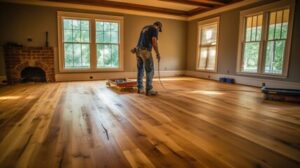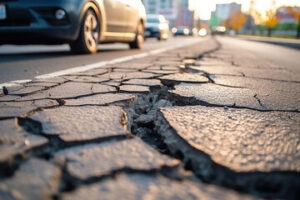Rodents pose a threat to your home and family. They cause property damage through nesting, gnawing on wires, and contaminating food sources. Rodents spread diseases, such as salmonella and hantavirus.
The best way to prevent rodents is to maintain sound housekeeping, eliminate loosely piled building materials, and use caulk or steel wool to fill cracks and holes around doors and windows. For more information, click the Rodent Retreat to proceed.

Rodents eat, contaminate, and damage food supplies, contaminate living spaces and equipment, and transmit diseases that cause illness to people. Removing their food, water, and shelter is the best way to prevent rodent infestations. Sanitation also plays an important role. Regularly sanitize kitchen counters, garbage cans, pet feed bowls, and trash bins inside and outside. Store dry foods in metal or plastic containers and seal birdseed and pet food. Remove weeds and overgrowth that provide hiding places.
Rodents chew through wood, drywall, insulation, and electrical wiring and are responsible for millions of dollars in structural damage each year. Rodents also spread disease-carrying parasites such as fleas, ticks, and mites that can bite people and transmit diseases such as bubonic plague, typhus fever, Lyme disease, and Rocky Mountain spotted fever.
Routinely inspect the interior of your home, including attics and crawlspaces, for signs of rodent activity. Look for droppings, rub marks (sebum(grease marks), and gnaw holes in the walls. Listen for scratching noises at night. You may need professional extermination services if you find evidence of rats, such as droppings or greasy rub marks, dark sebum(grease) spots in corners, or a thick layer of shredded paper on the floor.
Regularly remove piles of debris and clutter in the yard, providing hiding places for rodents. Prune shrubs and vines that grow into buildings and other structures, especially those growing on or over roofs. Remove places to hide, such as cluttered garages and sheds, tall grass, overgrown weeds, discarded machinery, stacked firewood, and plants that touch the side of your building like ivy.
Reduce their access to water by repairing leaky hoses and spigots, draining puddles, and preventing water buildup around foundations and eaves. Plug holes in the exterior of your home and outbuildings with steel wool, concrete mortar, or heavy gauge 1/4 inch hardware cloth. Use caulking and weather stripping to seal any openings. Use lath screen, cement, or galvanized sheet metal to cover vents. Make sure your garbage cans and other storage bins have tight-fitting lids.
Rodents leave a trail of evidence as they travel through your home and scout out new nesting sites. You can identify their tracks or runways by observing smudge marks (rodents have oily hair) or noticing footprints or urine stains, especially along walls. You can also see their gnawing marks, usually a sign of an active rodent problem.
Gnaw marks can be light or dark depending on the rodent species — mouse gnaw marks are softer and shiny, while rat gnaw marks are harder and darker. You can also inspect for fecal pellets, droppings, and gnawing damage. Fecal pellets help determine the rodent type and indicate the size of the infestation. Droppings are found throughout the home in corners, floors, furniture, stair railings, and walls. They have a distinct, musky odor and are quite sticky when fresh. You can also look for gnawing damage in and around your home’s exterior.
The best time to look for signs of a rodent problem is during their period of peak activity, usually just after dusk. It would be best to watch for any scurrying sounds during this time. Rodents are fond of attics, which provide dark, secluded spots for building nests and storing food items or family heirlooms. You can also check for their runways along walls or behind stored boxes and furniture. You can also check for smudge or grease marks on pipes, joists, and rafters. Finally, you can check for urine stains, which fluoresce under black light and have a strong, musky odor.
If you suspect a rodent problem, hiring a professional pest control technician knowledgeable about rodents and vermin is important. It would be best to choose a pest control specialist who treats rodents instead of general pests like ants and spiders, which are also common in Seattle. In addition to providing a thorough inspection, your licensed pest control professional can evaluate the amount of rodent exclusion (also known as rodent proofing) needed in your home.
Rodents are a major pest problem in homes and businesses, causing damage to property, food supplies, livestock, and structures. They are also significant disease carriers, transmitting fleas, ticks, and other parasites that can cause illness in people and pets. Rodents are responsible for millions of dollars in structural damage each year by chewing on wood supports and other materials, including electrical wiring.
Trapping is a key component of a rodent control program. Depending on the trap type, bait, and setting, it may be used instead of pesticides for a more environmentally friendly approach to rodent removal. Some traps require no bait, while others utilize a bait box to attract rats to the trap for a quicker kill. The trapping process can be very messy, so a professional should be consulted before this method of rodent control is used.
Mousetraps, rat traps, and specialized traps for invertebrates, such as spiders, are commonly used to remove rodents from properties. The traps can be spring, barbed wire, wooden boards, or a glue system. Some of these traps are safe for children and pets, allowing homeowners to relocate the rodents rather than kill them.
Rats are most active in the fall and winter when looking for warm places to nest and feed. They often seek shelter in attics, basements, and crawl spaces. The mice and rats will chew through wooden supports, drywall, and insulation in these areas, creating a fire hazard and compromising the structure’s integrity. They will also generate rodent nests in attics, which can block vents and ducts and lead to moisture issues inside the home.
To make a property less rat-friendly, keep garbage securely sealed in containers, clean pet dishes right after feedings, and store firewood at least one foot off the ground. Removing overgrown shrubs, bushes, and trees close to the home is also a good idea. The rodents can hide in those areas and jump over the roof to enter homes—professionally trained.
Rodents may be cute, but they’re a major pest problem for homes and businesses. They chew through wires, contaminate food and building materials, spread disease, cause fires, and create unsanitary conditions. Rodents are also known to attract other pests, including fleas and ticks.
Rodent droppings are a sign of an infestation, as are caves outside and scratching sounds inside the home. Other signs include rodent tracks, runways, rub marks, and gnawing in areas where food is stored. The smell of urine and feces is another indication of a problem.
Rats and mice are opportunistic pests that can find their way into homes, apartments, and businesses through the smallest cracks and crevices. To prevent these rodents:
- Thoroughly inspect your property regularly, especially in dark and secluded spaces.
- Look in crawl spaces, behind appliances, and near the roof and soffit areas for signs of rodent activity.
- Trim trees and shrubs so they don’t touch or provide shelter for your home.
You can also protect your home and reduce the risk of rodents by storing food in airtight containers, cleaning kitchen counters after meals, keeping food and trash tightly closed, and sanitizing garbage cans. Keeping pet food and litter in airtight containers is also a good idea.
If you spot signs of a rodent problem, eliminate the infestation as quickly as possible. A professional can perform an inspection and recommend the right treatment plan for your situation.


